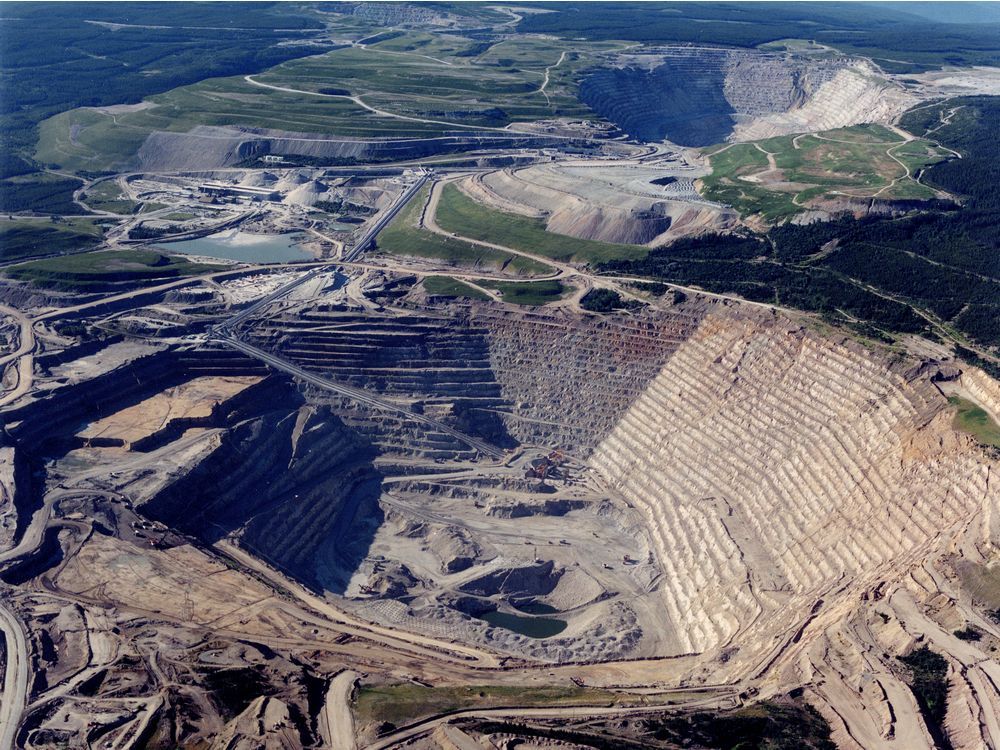
The Mining Association of B.C. says the industry has a once-in-a-generation opportunity to boost public support for new mines, and it touting $90 billion worth of potential projects at a time other big projects are winding up construction.
A year ago, the association published a list of 17 potential projects at some stage of environmental review and approval, four of which have already been singled out by the province for fast-tracking under the promise Premier David Eby made to kickstart resource projects to defend B.C.’s economy.
The mining association has expanded that list to 27 in its latest forecast, which CEO Michael Goehring said was a response to “unprecedented economic uncertainty that we’re facing here in B.C. and Canada.”
“What we did find was that the economic potential of these 27 projects is substantial, actually it’s staggering,” Goehring said, noting that if even half the projects were to go ahead “that’s $45 billion in economic activity across British Columbia.”
The mining association’s challenge to government is to make good on its promises to expedite permitting and bolster the consultation process to give First Nations the chance for meaningful participation in review processes and help unlock what Goehring called a “generational opportunity.”
“B.C. has what the world needs, but mining has what B.C. needs,” he said. “In the current climate of economic security, B.C.’s mining sector has the ability to secure a stronger, more stable and resilient economic future for all British Columbians.”
The catch is that many of the projects exist only as potential mineral deposits that have been singled out by prospecting and exploration. They’ll need more exploration work and favourable global markets, among other factors, to reach production, according to experts.
“We need to be cautious in saying that all of these could advance,” said John Steen, director of the Bradshaw Research Initiative in Minerals and Mining at UBC, noting that going from discovery of a deposit to an operating mine can take decades.
Some of the most time-consuming steps — environmental reviews and permitting of new mines — are things the province has promised to speed up in a bid to boost mining as economic security against U.S. tariffs and President Donald Trump’s threats to Canadian sovereignty.
And in seizing a moment when new Prime Minister Mark Carney also heralded Canada’s critical mineral potential promising a “one project, one review” process, Goehring said his association wanted to “take a fresh look at all of the mining projects currently on the books.”
The mining association is taking its revised economic impact study on tour of major business associations. Last Friday, Goehring spoke at the Minerals North conference in Prince George.
Tuesday, he brought the document to the Greater Vancouver Board of Trade for the mining association’s annual keynote event and to a panel convened for an episode of Conversations Live on The Vancouver Sun’s website.
In the immediate moment, with projects such as the $40 billion LNG Canada development and B.C. Hydro’s $16 billion Site C dam winding up construction, Goehring said there is an impetus to move ahead quickly with mining.
The federal government has already been promoting mining as the means to embrace the climate-related transition to renewable energy with the critical minerals strategy it unveiled in 2022.
Goehring, speaking to a full ballroom audience at the Fairmont Hotel Vancouver, said he would like to give governments an A grade for the things they’ve been saying in commitments to speed up mine permitting.
“However, at this point I have to give them a grade of ‘incomplete’ when it comes to actually shortening those approval timelines,” Goehring added. “Because we have been talking about this for a long time.”
First Nations, meanwhile, have raised concerns about whether fast-tracking projects can be accomplished while respecting Indigenous rights.
The Assembly of First Nations regional chief, Terry Teegee, has acknowledged the need to counter “bullying behaviour of the United States,” but said development must align with the Declaration on the Rights of Indigenous People’s Act.
Goehring said Tuesday that mining “can be a rising tide for First Nations” by providing jobs and opportunities in far-flung communities, but both industry and government have to make sure Nations have the capacity to take part in decision making “on a level playing field.”
Steen said the convergence of events create mixed conditions for the prospects for mining. The energy transition does boost long-term demand for a lot of the minerals that B.C. produces, such as copper.
In the short-term, the uncertainty sowed by the U.S. trade war does boost prospects for gold miners as investors flock to the so-called “safe haven” investment, Steen said.
The risk of recession, however, will make it harder for projects seeking to develop base metals such as copper and nickel.